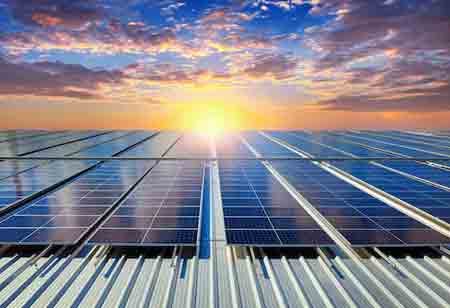Thank you for Subscribing to Energy Business Review Weekly Brief
Unveiling the Potential of Solar Photovoltaic Technology
Solar photovoltaic technology is essential in global renewable energy, directly utilizing sunlight to create electricity.

By
Energy Business Review | Thursday, April 24, 2025
Stay ahead of the industry with exclusive feature stories on the top companies, expert insights and the latest news delivered straight to your inbox. Subscribe today.
Solar photovoltaic technology provides environmental benefits and economic savings, but challenges like intermittency and space requirements must be addressed for sustainability.
Fremont, CA: Solar photovoltaic technology is essential in global renewable energy, directly utilizing sunlight to create electricity. It is a sustainable solution to meet the enormous energy demands in homes, businesses, and industries; however, its full potential awaits further development.
Solar photovoltaic systems' most crucial environmental advantage is that they emit zero greenhouse gases, minimizing air pollution and mitigating climate change. They harness the power of the sun to provide human activities but eliminate the emission of greenhouse gases from fossil fuels.
Solar PV is also gaining momentum economically. The past decade alone has witnessed tremendous reductions in the cost of solar panel investment because of recent technical developments and upgrades to capacity. This has brought solar energy closer to traditional energy sources in many areas in terms of cost. Long-run savings on electricity will amount to hundreds of dollars, and people will be able to earn back their investments after just two or three years.
Solar energy helps enhance energy independence. All-in-onsite electricity production reduces dependency on the grid, which is advantageous in remote areas where the electricity supply is unstable. The source of locally produced energy becomes immune to the country's fluctuations and this disruption of supplies.
Some disadvantages of solar photovoltaics include its dependence on sunlight to provide illumination, which naturally creates intermittency during overcast days or nighttime hours. Energy storage solutions like batteries associated with this technology are costly and need more development for efficiency and environmental benefits. However, this technology can be used as an alternative form of energy for power generation.
The primary difficulty with solar panels is their physical space requirements for installation, which might offset their viability in urban areas where roof space is a constraint or shading issue. Second, the aesthetic impact of solar panels on rooftops and landscapes can give rise to resistance to using them.
Solar panel manufacturing and disposition also raise environmental concerns, mainly because the manufacturing process may involve hazardous materials. While many panels are designed to last well over decades, their time ends, creating an issue regarding waste management and recycling. Sustainable manufacturing and recycling practices ensure that the environmental benefits outweigh the negative impacts.
Energy independence is one environmental and economic benefit of solar photovoltaic technology. However, intermittency, space requirements, and manufacturing impacts pose challenges in exploiting this technology to its full potential. The future of solar PV promises a sustainable energy landscape that will contribute to a cleaner, greener planet. Living with these technologies and overcoming the associated challenges in creating a future powered by renewable energy is very important.






